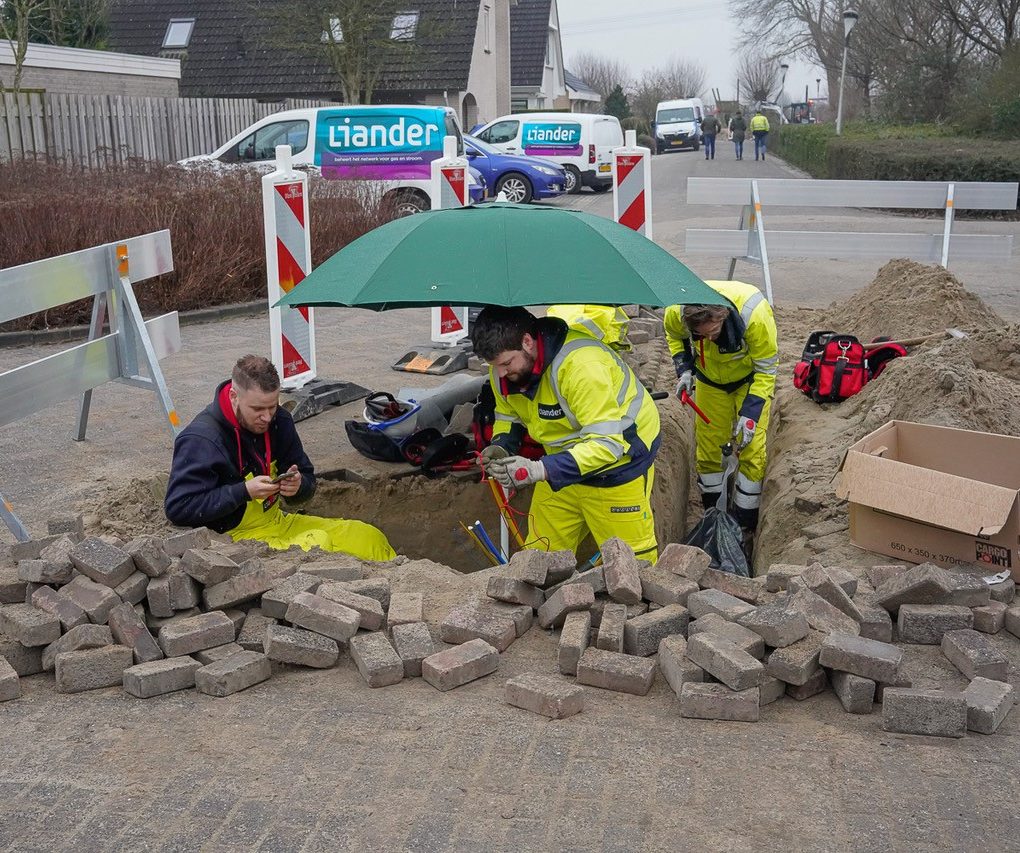
Electricity network in residential areas is approaching maximum capacity
The energy transition is moving full speed ahead. A growing number of consumers and small businesses are also investing significantly in greater sustainability. For example, the number of solar panels on the rooftops of homes and small businesses in Liander’s (an Alliander subsidiary) network operator service area increased by 25%, accumulating to over 760,000 installed solar panels. The number of heat pumps in homes is rising rapidly nationwide. The tally has now passed the one million mark. And the number of electric cars in the Netherlands has also tripled in two and a half years to more than 300,000. All these factors lead to a substantial increase in electricity usage in residential areas, a trend that is also reflected in the number of requests from consumers requiring a more powerful electricity connection. Liander received more then 43,000 requests of this type in 2022. That represents an increase of 100% relative to the number of requests received in 2020. In view of the targets set in the Climate Agreement, the rate at which the Netherlands is moving towards greater sustainability will accelerate further in the coming years. However, Alliander will not be able to match the speed of the energy transition if it continues at this pace. The electricity network in residential areas needs to be substantially upgraded to accommodate all the new connections and the requests for a more powerful connection.
Higher load on the electricity network
Maarten Otto, Alliander’s CEO: “The electricity network in residential areas in many places does not yet have the capacity required for accommodating the speed at which consumers are making their homes more sustainable. Our people are working hard to modify this network so that consumers can implement their sustainability plans. Last year, once again, we laid more cables and installed more transformer stations than the year before. We need to add 20,000 transformer stations to our network in the coming years to be able to meet future demand. Excavation work will be required in 1 out of every 3 streets in order to upgrade the electricity network. This is a tough assignment that we will not be able to complete at the rate at which electricity demand is rising. In addition to the overwhelming size of this challenge, we are also having to cope with staff and material shortages that prevent us from simultaneously starting work in all areas. Regrettably, this means that we will temporarily not be able to satisfy requests immediately from private individuals and small businesses for a small consumer connection when there is an increasing lack of capacity in the neighbourhood networks. This is already an issue in some places, but we anticipate that this phenomenon will become more widespread in the coming years. Even so, to meet our customers’ needs as well as we can, we have decided to implement some of the new connections or network upgrades anyway, resulting in a temporary extra load on the network.”
This additional load may lead to an increase in voltage-related bottlenecks. The effects vary from temporarily not being able to feed electricity from solar panels into the network to intermittent flickering of lights in people’s homes. In a few cases, the additional load may result in power outages at the level of individual buildings, or complete streets or neighbourhoods. Whether or not this will happen depends on the demand for electricity at any given time and is therefore difficult to predict.
Space for transformer stations
Alliander invested heavily last year in order to meet the demand for electricity. Walter Bien, Alliander’s CFO: “In 2022, total investments amounted to over 1.2 billion euros, much of which was spent on maintenance and expanding the gas and electricity networks. We installed and rebuild 2,012 transformer stations in our network and 2,212 kilometres of new electricity cable were laid. That high level of investment will continue into the future. We will invest nearly 5 billion euros in the low-voltage network in the period up to 2030.”
Residents and businesses will see that the network operator is working on the network in their neighbourhoods. For example, construction nearby for a new substation, or excavation work in the street for additional cables or for installing a transformer station. The availability of adequate space in the neighbourhoods is essential for this work. However, space is scarce and procedures to find suitable locations and issue the permits required often take a long time. This requires municipalities to make an effort to make space available for transformer stations, for instance, and to speed up these procedures.
Furthermore, the work in residential areas is not limited to the electricity network alone. Work is also ongoing in many places to maintain the gas network to keep it reliable and safe.
Changing energy system
To make the transition to the changing energy system as smooth as possible, consumers and businesses with solar panels can also act themselves to avoid overloading the electricity network. They can store the electricity they generate themselves or use it at source by, for example, shifting their consumption by turning on the dishwasher during the day or charging their electric car at that time. This reduces the amount of electricity fed back into the network. But even if people do not have solar panels, they can still spread their electricity consumption by turning on fewer electrical appliances at peak times. “The assumption that energy is always immediately available may no longer be the case and this has never been so apparent in recent decades as it is now. Consumers are also increasingly affected by this issue. I can understand the severe impact of this message. The energy transition is also a societal change. It not only requires us to upgrade the electricity network; we must also change how we use energy,” says Maarten Otto.
Financial results
In 2022, Alliander achieved a net profit of €198 million (2021: €242 million). Total investments increased to €1,228 million (2021: €1,014 million). Operating income for 2022 came in at €2,213 million (2021: €2,181 million). Operating expenses showed an increase to €1,903 million (2021: €1,827 million). “The increase in operating expenses is mainly a result of higher costs for network losses and higher tariffs charged by TenneT. On the other hand, municipalities will no longer charge a sufferance tax as of 2022,” explains Walter Bien.
For more details, see Alliander’s 2022 annual report: https://2022.jaarverslag.alliander.com
